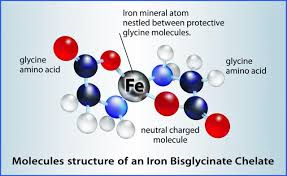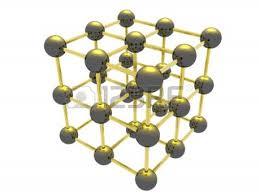If it is not in the soil, it is not in the plant, it is not in your body
There is much evidence that we are made to live on vitamins. Anyone in research or medical background would agree, some to a point, that vitamin deficiency is a serious problem and can be seriously harmful to health. Take Scurvy for example, it wiped out two centuries ago many hundreds of thousands of sailors and officers from the British Navy to the point that senior admirals were addressing this issue much higher priority that the Spanish Armada. Many will argue, that you can get all your vitamins and nutrition from the food that we are eating. One would wish that this is the case, perhaps when agriculture was nothing else but organic and fruit and vegetables were ripening at the stem. In today’s world, unless you grow your own or buy from small local grower, you may have some chance, that is if you consume in very large quantities of it. There is a little chance that you would get all of what your body needs, solely from the food that you consume, organic or not, to have a sustainable health. Even so, the soil is likely to be missing some essential nutrients, due to overharvesting.
Aren’t all Vitamins and minerals the same?
Chelated mineral Iron – fully absorbed by the cells Metallic mineral structure
Of course not. There are many minerals in the sand, rock and soil. Lucky for us, those are not in the right molecular structure and those are likely to cause harm than good to humans. Other mammals, like dogs and most herbivores get some minerals straight from the soil. If you have a dog you would have seen him/her licking the dirt, when it need his minerals? Our minerals, however, need to be incorporated in an amino-acid to be recognised by the cells and fully absorbed. The process is known as “chelation” and is occurring ONLY naturally as a result of photosynthesis in green leafy plants and sunshine. For example “Oral Chelation Therapy” is used to replenish with vitamins, minerals and the removal of heavy metals. It is a recommended practice by many doctors and natural healers and must be conducted with proper chelation products and carried out under specialist supervision. Our Bodies CANNOT PRODUCE MINERALS. Those need to be taken in the body, from food consumption or via the skin. most likely in the form of wholesome salts.
Vitamins are more complex structure than amino acids and some can be made up in the cells. Not Vitamin C though. All mammals produce their own Vitamin C but not humans. A bio-chemist shared with us, that when synthetic Vitamins are tested with naturally sourced Vitamins in lab conditions are showing different parameters. Same vitamins are tested, same chemical formulas, same structure. White light is put through and the natural vitamins deviate the light slightly to the left(lefties), and the synthetic ones – to the right(righty). The reason: “ We don’t know but we believe it is to do with the direction of rotation of the electrons in the molecule.” A cell can without error recognise that and would likely flush the synthetic one, while absorb the natural one. How miraculously smart are our bodies?
To supplement or not to supplement… that is the question?
The general answer to this question is: Absolutely Yes! It seems a guess work most of the time. There is no way of knowing if you are deficient or not, unless to have those tests done daily. Even so, that would vary throughout the day. Fortunately our body does not take much notice of the daily fluctuations and evens up from stored temporary supplies. Hypothetically, If you are living a full urban or rural life, busy at work and plenty of exercise, exposed to takeout food, social occasions alcohol and household chemicals, it is likely that you will be deficient most of the time on some minerals, vitamins and amino acids.
Is over supplementation dangerous?
There is little to fear from proper vitamins and minerals from vegetable origin. As far as we could research, there are no vitamin supplementation related deaths or complications. Not confirmed anyway. However, there are some tests that indicate that if you have cancer or heart problems already, over-supplementing with synthetic beta-carotene or Vitamin A, condition would exacerbate in some of the case. Healthy individuals however, are likely to go for years without any problems.
The cellular damage due to a lack of properly formatted vitamin and mineral far supersedes the miniscule totally unconfirmed risk of over- supplementation with those. So wouldn’t be wise for your body to have access to what it needs at all time? A daily properly formatted multi intake ensures that this doesn’t occur? Consider this, every single day 100 000’s old cells are dying in our bodies and new cells are being produced, built with whatever nutrition and cholesterol that may be available at the time.
An often overlooked truth is that we tend to get well by making new cells, not by correcting those that are malfunctioning. We replace the rods and cones in our retina every forty-eight hours. The lining of our intestines is replaced every three days. We replace our skin every six weeks, our liver every eight weeks, our nervous system every eight months, and our bones every year. This brings nutrition into a clearer focus. If we are going to make good cells, we must have good raw materials to make them from. In addition, we must not be missing necessary components.”
From “Healing is Voltage” by Jerry Tennant, MD, MD(H), PSc.,D. Page. 29.
Dr Linus Paulding Theory.
Dr Linus Paulding was awarded Nobel price – twice, for his contribution to science and the roles of Vitamins and nutrition, as well aa the role they play in longevity. So many have ferociously criticised this brilliant scientist and larrikin of heeling naturally. And he lived to 94 to prove his point, while most of his critics were silenced by their terminal diseases much earlier. Dr Paulding was the pioneer of the theory of Vitamin overdosing to heel heart problems and other degenerative conditions.


